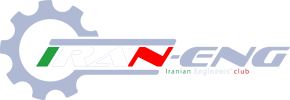You are using an out of date browser. It may not display this or other websites correctly.
You should upgrade or use an alternative browser.
You should upgrade or use an alternative browser.
کمک در خصوص دستور Switch Case در زبان ++C
- شروع کننده موضوع z@p
- تاریخ شروع
Switch Case Statements in C Plus Plus
Switch case statements are a substitute for long if statements that compare a variable to several "integral" values ("integral" values are simply values that can be expressed as an integer, such as the value of a char). The basic format for using switch case is outlined below. The value of the variable given into switch is compared to the value following each of the cases, and when one value matches the value of the variable, the computer continues executing the program from that point.
Switch case statements are a substitute for long if statements that compare a variable to several "integral" values ("integral" values are simply values that can be expressed as an integer, such as the value of a char). The basic format for using switch case is outlined below. The value of the variable given into switch is compared to the value following each of the cases, and when one value matches the value of the variable, the computer continues executing the program from that point.
کد:
switch ( <variable> ) {
case this-value:
Code to execute if <variable> == this-value
break;
case that-value:
Code to execute if <variable> == that-value
break;
...
default:
Code to execute if <variable> does not equal the value following any of the cases
break;
}The condition of a switch statement is a value. The case says that if it has the value of whatever is after that case then do whatever follows the colon. The break is used to break out of the case statements. Break is a keyword that breaks out of the code block, usually surrounded by braces, which it is in. In this case, break prevents the program from falling through and executing the code in all the other case statements. An important thing to note about the switch statement is that the case values may only be constant integral expressions. Sadly, it isn't legal to use case like this:
کد:
int a = 10;
int b = 10;
int c = 20;
switch ( a ) {
case b:
// Code
break;
case c:
// Code
break;
default:
// Code
break;
}The default case is optional, but it is wise to include it as it handles any unexpected cases. Switch statements serves as a simple way to write long if statements when the requirements are met. Often it can be used to process input from a user.
منبع
